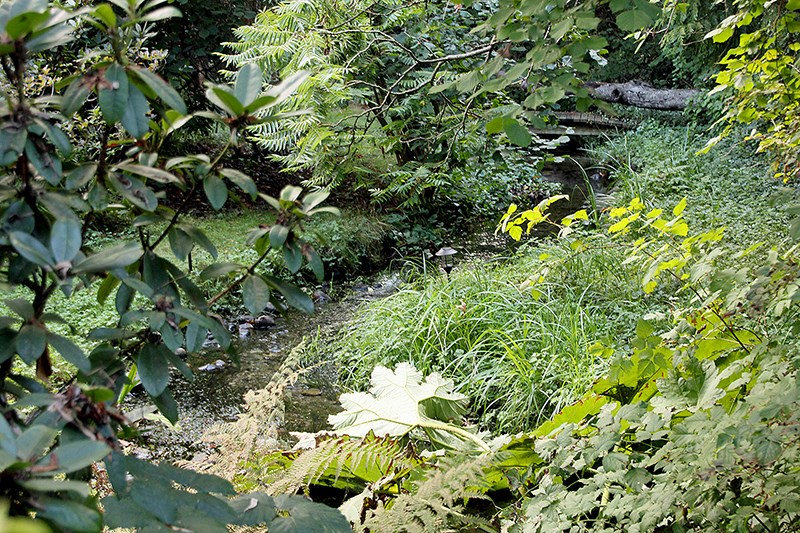Last Sunday, stream stewards all over B.C. celebrated World Rivers Day. Rivers Day was first celebrated in B.C. 36 years ago and has now spread to more than 60 countries. Rivers Day remains especially significant in B.C., where we have many volunteers actively engaged in raising salmon and protecting local streams.
In the Tri-Cities, we are fortunate to have several urban streams with their own groups of volunteers dedicated to keeping pollution out of their streams, enhancing the riparian forests that protect them and undertaking other initiatives to sustain the salmon in them.
One of this region’s lesser known urban streams is Maple Creek, which runs through Port Coquitlam and Coquitlam on the west side of the Coquitlam River. It empties into the Coquitlam River slightly upstream from the mouth of Hoy Creek. In many places, such as along Kingsway Avenue, Maple Creek flows in an artificially straight channel, which, sadly, resembles a drainage ditch more than a living stream.
Despite such impacts from inappropriate urban development done decades ago, Maple Creek has a passionate group of volunteers who have worked tremendously hard to enhance this stream over the past quarter century.
And they were aghast this summer to learn the Fisheries and Oceans Canada had approved a proposal to move a tributary of Maple Creek to make room for a house proposed that would be well over 10,000 sq. ft.
Moving streams out of the way to make room for development is never a wise thing to do. Furthermore, such an action would have not been allowed before the Stephen Harper Conservative government eliminated protection of fish habitat from the federal Fisheries Act in 2012. To the grave disappointment of stream stewards, the Justin Trudeau Liberal government has, to date, failed to restore fish habitat protection.
Decades ago, fish habitat was also not protected, so streams were commonly redirected, ostensibly to make room for new development. But streams are not so easily shifted from their course. Some of the water in a stream flows beneath the surface. It’s always a mistake to move a stream because the portion flowing beneath the surface tends to keep its original course. People who move streams to make way for houses often end up with very wet basements, especially after heavy rainfalls.
There can be other problems with moving streams. Back in 1958, both Hyde and Smiling creeks, which drain the western and southern slopes of Burke Mountain, were perceived to be “in the way” of development as they flowed across the more gentle terrain of Port Coquitlam towards the Pitt River. As a consequence, both were redirected to a channel dug eastwards to discharge into DeBoville Slough. Partington Creek (once called Yule Creek), which flows from the eastern slopes of Burke Mountain, once discharged directly to the Pitt River near the present day mouth of DeBoville Slough. To gain more farmland, Partington was redirected westwards along the north side of Cedar Drive to also discharge into the upper end of DeBoville Slough.
The result? There have been problems with these creeks ever since.
After diversion, Partington Creek was forced to make a sharp right turn at Cedar Drive. At this turn, gravel tends to accumulate in the stream bed and, as a consequence, the creek is prone to overflowing its banks here. The gravel that builds up at this turn needs to be regularly removed to keep the creek flowing around this bend — and it’s a shame to have to remove so much good spawning gravel from the creek simply to prevent flooding. Ever since it was diverted, engineers from the city of Coquitlam have faced costly challenges to “manage” its flows. Surely, it would have been far more prudent to let Partington Creek follow its natural course to the Pitt.
The situation with Hyde Creek is almost worse. Right where the hatchery and educational facilities have been built, the creek strangely goes dry every summer. It turns out that this is exactly the spot where the creek was redirected from its original course. Presumably, the subsurface flow is still following its original course. Dealing with a dry creek bed every summer has created many problems for the Hyde Creek Watershed Society as it requires water in which to rear juvenile coho all summer.
I hope city council and staff in Port Coquitlam are wiser these days and will prohibit the proposed moving of the spring-fed tributary of Maple Creek, which is full of juvenile coho and wild cutthroat trout.
The other residents in this neighbourhood are doing a lovely job of caring for this beautiful little stream. It would be a travesty to destroy it and replace it with a monster house.
Elaine Golds is a Port Moody environmentalist who is president and conservation chair of the Burke Mountain Naturalists, and member of the boards of the Colony Farm Park Association and the Port Moody Ecological Society.



